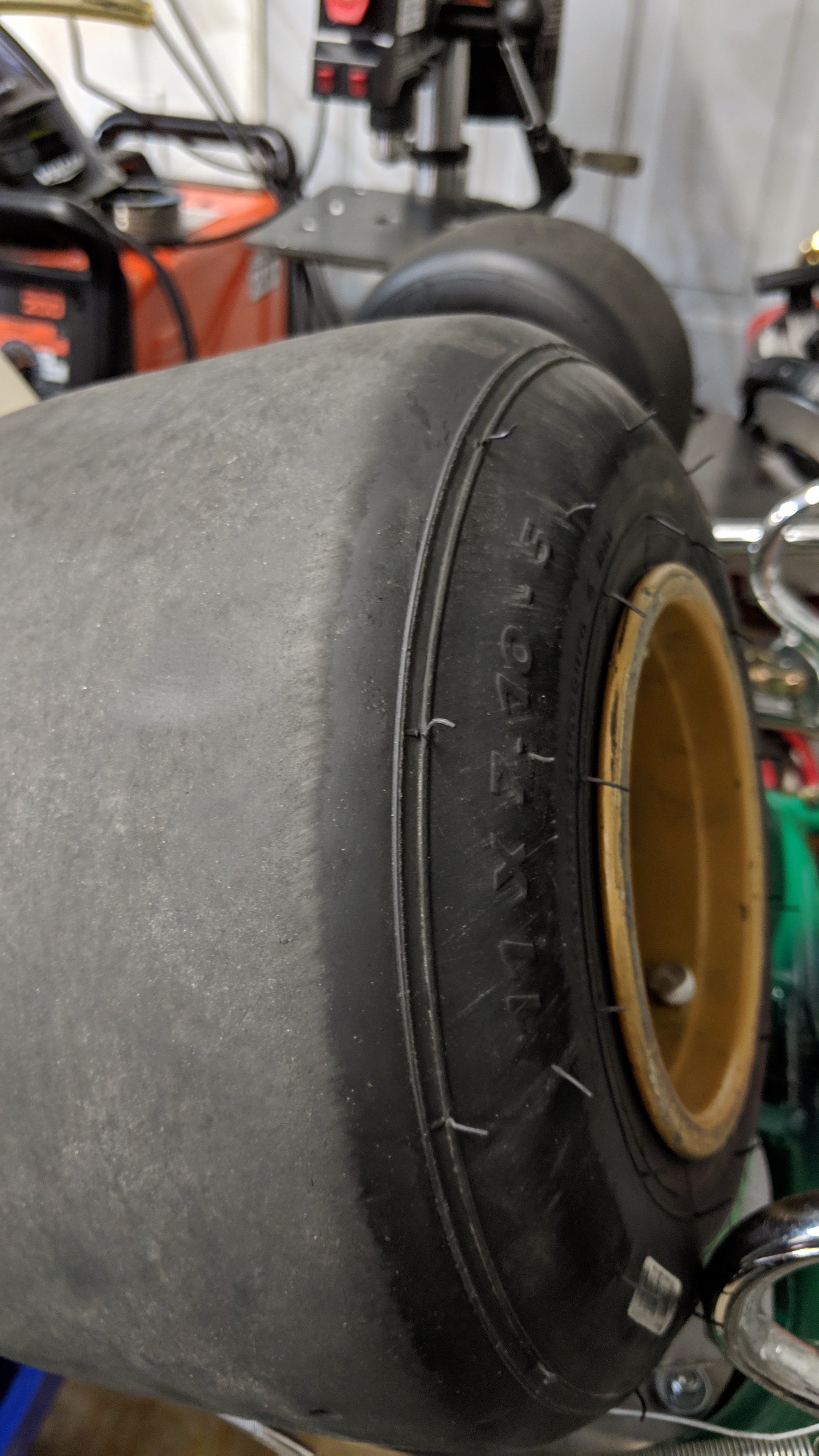2005 TK Krypton shifter with new MG YZ (greens) tires on OTK magnesium wheels (not sure if that matters). Rear width is 55" (1397mm) and front is 53" (1346mm) both measured at the outside edge of the rim. Oval front torsion bar installed oriented with the oval vertically, and no rear torsion bar. Front and rear ride height are both set as high as they can go, caster is set to max, and camber appears to be neutral from eyeballing it. No idea on toe. I bought this kart from a gentleman with about 18 years of karting experience and decided to not mess with any of the chassis tuning settings as he probably knows better than I. As this is is my first kart, and only the 2nd kart I’ve ever been in aside from indoor rentals in the past 15 years, I’m not even sure of what a good handling kart should feel like. I try to avoid comparing it to what a good handling car is because apples to oranges. Lastly, due to lack of an available track, I’ve nobody locally to turn laps with. I’m quite literally on my own and am trying to avoid the echo chamber of my own hubris.
My goal with this kart is to autocross it. As such, my runs will be under a minute and won’t afford the tires time to get up to the temps you guys see at the track. Warmers are out of the question, so I need to maximize cold grip.
My initial session on the greens was on a partly cloudy day with air temps in the mid 70s. The pavement was cool to luke warm to the touch. I set the pressures to 14 psi f\r, however I was experiencing a bit of understeer at turn in. Or at least more than I thought there should or would be. The kart balance was fairly neutral off throttle and brake, but as I rolled on the throttle approaching mid turn, it didn’t take much encouragement to transition to oversteer. I was driving aggressively, or as aggressively as I dared given the proximity to curbs and buildings, and the tire temps never got hotter than warm to the touch, even after about five minutes of lapping a lopsided figure 8 course. The fronts stayed colder than the rears.
My questions are,
Would I lower or raise cold pressure to maximize grip. Everything I’ve learned from bikes and cars says lower pressure generates more heat, but I’ve read somewhere that the opposite is true for karts. That makes no sense to me, but I’m suspending conventional wisdom and keeping an open mind.
Are my track widths within reason for the intended use of the kart? I intend to make single large adjustments of track width and camber\caster and take notes, but a baseline would be nice to have for next time.
Am I driving it wrong? 22 years of driving fast is telling me to do all my braking before turn in, then start rolling on the throttle as I approach the apex and using throttle modulation for the 2nd half of the turn to balance under and oversteer. However, I understand that the kart needs to unload the inside rear and that the rear behaves more like a motorcycle in regards to vertical CG and the vector of load between it and the contact patch, and more like a car up front in terms of weight transfer to the outside tire due to lateral acceleration and the jacking effect from the inside front. Is my application of throttle negating the jacking effect and thusly, loading the rear up? It seems odd that I should be almost coasting through the majority of the turn but again, I’m suspending conventional wisdom and am open to what you guys say.
Lastly, tire wear. For autocross cars, it’s always been my general rule of thumb for pressures that the tire should be rolling over on the shoulder just enough to wear the tread up to the edge of the block. Looking at my kart tires, the tires aren’t rolling over on their shoulders at all. Can I apply this method to karts to dial in pressures, or is this a different animal in that regard? I’ve attached a couple pics of the tires to show what I’m referring to.

